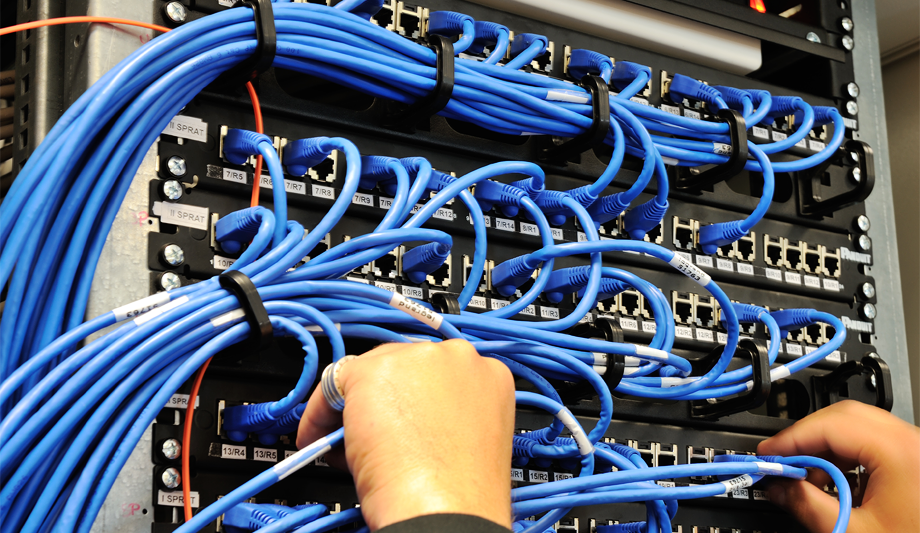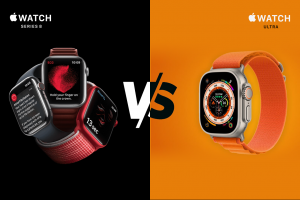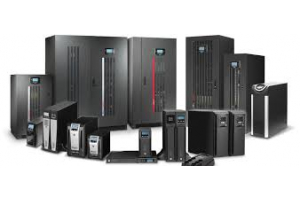Everything You Need to Know About Networking Cables and Their Types

Networking cables are physical cables that are used to connect devices together in a network. They are deployed for transmitting data, voice, and videos between printers, computers, servers, routers, and other devices connected to the network. They are available on the market in different types each having unique features and capabilities. This blog will attempt to answer all questions related to networking cables so that you can make an informed decision.
Table of Content
- Why Should You Have Good Quality Cables for Your Network?
- Types of Networking Cables
- Coaxial Cables
- Twisted Pair Cables
- Unshielded Twisted Pair(UTP) Cables
- Shielded Twisted Pair(STP) Cables:
- From Cat5 to Cat8: The Evolution of Ethernet Cables
- Fiber Optic Cables: The Key to High-Speed, Long-Distance Networking
- How Morgan Can FZ LLC Help You?
Why Should You Have Good Quality Cables for Your Network?
Networking cables are the building blocks of any network. They perform a key role in ensuring smooth communication and secure data transfer in industries and organizations. The connectivity among devices for sharing information and connection to the network, fast and efficient communication among devices to ensure improved performance and productivity within an organization, protection against external interference and signal loss, and safeguards against unauthorized access are some objectives that cannot be materialized without installation of a good quality networking cable.
Types of Networking Cables:
Networking cables come in various types and specifications. The most common networking cables include Coaxial cables, Twisted Pair Cables, and fiber optics cables
Coaxial Cables:
These cables consist of a copper core that is surrounded by a dielectric insulator, shield, and Jacket or rubber wrapper. Coaxial cables are installed for television and internet connections for homes and smaller businesses. Some pros and cons have been discussed below:
Pros of Using Coaxial Cables:
- Coaxial cables can support high bandwidth signals which makes them suitable for television cables and high-speed internet connections;
- The outer metal shield of coaxial cables provides immunity against Electromagnetic Interference (EMI) and Radio Frequency Interference(RFI). These interferences can impact signal quality drastically and thus causes disturbances.
- They are durable which makes them suitable for applications in harsh outdoor installations for various purposes.
- Coaxial cables are readily and widely available. They are also compatible with most networking devices
Cons of Using Coaxial Cables:
But there are some disadvantages associated with coaxial cables. For instance, they are more expensive than twisted pair cables. They are less flexible as they are bulky, stiff, and less pliable which makes them harder to install. And more importantly, coaxial cables can support signal transmission at a shorter distance.
Twisted Pair Cables:
These cables consist of two or more copper wires twisted together to reduce interference. Twisted Pair cables are fast becoming the most popular cabling medium. Twisted Pair Cables of two types:
Unshielded Twisted Pair(UTP) Cables:
These cables comprise four pairs of copper wires twisted together for reducing external interferences. UTP cables are the most common type of twisted pair cables. Since they are not covered with foil or braiding, they are called Unshielded Twisted Pair cables.
These cables comprise four pairs of copper wires twisted together for reducing external interferences. UTP cables are the most common type of twisted pair cables. Since they are not covered with foil or braiding, they are called Unshielded Twisted Pair cables.
But there are some disadvantages as well. For instance, UTP cables can support data transmission at a shorter distance, typically no more than 100 meters. Since they are not shielded, therefore they are prone to interferences from the external environment. Similarly, they are not immune to cross-talks (mixing up signals from two lines) and attenuation which is the gradual loss of signals with increasing distance.
It is recommended that UTP cables are suitable for networking for homes and smaller businesses, but they are not suitable for a high-interference environment like commercial and industrial settings.
Shielded Twisted Pair(STP) Cables:
As their name indicates, STP cables are provided with an additional shield along with four pairs of copper wires twisted together. Like UTP, STP cables also offer some particular advantages and disadvantages:
They are shielded, so they are immune to external interferences like Electromagnetic Interference and Radio Frequency interference. Therefore, they are more suitable for environments having a lot of interferences like factories, airports, and data centers. STP cables can support the transmission of data at much longer distances without any need for hubs or repeaters.
On the flip side, users keep in mind some disadvantages as well. For instance, they are expensive and much harder to install and terminate than UTP cables. They are stiff and less flexible which makes it harder to route them through the buildings.
It is recommended that UTP cables are suitable for networking for homes and smaller businesses, but they are not suitable for a high-interference environment like commercial and industrial settings.
From Cat5 to Cat8: The Evolution of Ethernet Cables:
CAT series refer to different categories of Ethernet cables. The Cat number indicates the performance and data-transmitting capabilities of Ethernet cables. Some popular options have been discussed below:
Cat 5 Cables:
This older standard of Ethernet cables can support the transmission of 100 Mbps data up to 100 m. They are no longer used, only Internet Service Providers use this type of cable for internet connection.
Cat5e Cables:
This is an enhanced version of Cat5 that supports speeds of up to 1000 Mbps (1 Gbps) and a maximum distance of 100 meters.
Cat 6 Cables:
This is a high-performance cable that can support speeds of up to 10 Gbps and a maximum distance of 100 meters. There are multiple variants within this category like Cat 6 A and shielded Cat 6 which offers better resistance against cross-talks and other disturbances and is suitable for high bandwidth applications like video streaming, gaming, and other multimedia.
Cat 6 cables are also suitable for concealed cabling that is the installation of cable inside the walls. Don’t for Cat 5 if you are going to cables inside the walls.
Cat 7 Cables:
This premium cabling solution cost a steep upfront cost. The four individually-shielded copper wires make sure that there are minimum interferences and crosstalk. They are capable of supporting 10 Gbps speed up to 100-meter distance. Cat 7 cables are optimized for high-bandwidth applications like video streaming and gaming.
Cat 8 Cables:
This is the most advanced and fastest cabling solution. They have been designed for high-end switch-to-switch communication in 25 Gbps and 40 Gbps networks. Cat 8 cables are capable of the complete elimination of crosstalk and EMI or RFI interferences to give optimum signal quality
Fiber Optic Cables: The Key to High-Speed, Long-Distance Networking:
Fiber optics is the type of cable that use light for the transmission of data. They consist of a very thin glass crystal surrounded by cladding and a protective shield. They are deployed for long-distance networking and counted on for sending a large amount of data. They are of two types: Single Mode and Multimode.
Single Mode Fiber Optics cables have a small core and are capable of sending data up to 40 km. Multimode cables have a larger core and are typically used for shorter-distance networking up to 2 km.
Advantages of Fiber Optic Cables:
- Fiber optics can support high-speed data transfer, with a speed of 100 Gbps or even higher
- They are immune to external interferences (EMI and RFI) that translate into boosting signal quality significantly
- Fiber optics can transmit data at a much longer distance than copper-based various cables. They are capable of sending data up to 40km.
- Coaxial cables are readily and widely available. They are also compatible with most networking devices
Disadvantages of Fiber Optics Cables:
There are disadvantages associated with Fiber optics. For instance, they have a very steep upfront price and a complex installation process. They are fragile as well because glass or plastic optics cables are more fragile than copper-based cables and can easily be damaged, if not handled properly.
How Morgan Can FZ LLC Help You?
Morgan Ingland FZ LLC specializes in supplying cost-effective cabling hardware along with accessories like faceplates, Cable Ties, Cable Organizers, etc. Every kind of Ethernet cable/networking cable including but not restricted to coaxial cables, fiber optics cables, firewire cables, and signal cables, among others, are available at our stores at the most competitive price in the market.
We are committed to serving you day in and day out. Feel free to contact us at +971 72091222 or email us at marketing@miatlantic.ae for further any kind of end-to-end solution design you require






